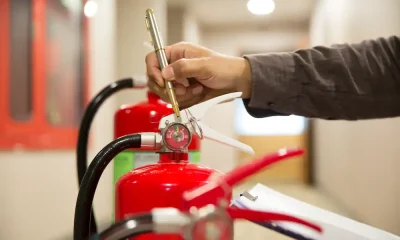Technology
Is Machine Tending Relevant to Your Factory?

The word robot brings up a negative image in many people’s minds. Many people, especially those who don’t work in the manufacturing sector, don’t have an idea of how a modern robot looks like. Probably the only image in their minds is the rampaging machine in the Terminator movies and Star Wars.
However, the fact is that robots are here with us.
Experts believe that in a few decades, robots will take up the majority of the manufacturing jobs in our industries. In fact, many manufacturing companies are already reaping the benefits of robotization.
Use of Robots in Manufacturing Industries
Many of the robots produced today are deployed to manufacturing industries where they work alongside humans. Companies that have already installed robotic machine tending systems are benefiting from increased productivity due to extended operating hours and greater efficiency in their production processes. Robots in a manufacturing company are used to complete various tasks such as:
Software & Data Analysis
Companies are not only relying on robotic machine tending in their production processes, but they are also using robots that consist of software to streamline their production processes. Some of these bots can execute tasks more efficiently than humans. For instance, the software can handle and process large volumes of data faster and more accurately than people. This helps technicians to monitor production processes and predict and prevent system failures. The software can also be used to perform digital reviews to identify underperforming operations.
Automated Assembly
Some companies are already experimenting with fully automated assembly lines. When implemented, automated software will manage the entire manufacturing process right from placing orders, processing, and packaging. With such systems, it will be possible to place orders any time of the day and get your product within a few hours.
Quality Control
Cobots can also help manufacturing companies to improve the quality of their products by taking charge of the quality control process. Currently, quality control involves capturing massive volumes of data that help in streamlining the manufacturing process. Automating the quality control process will help in saving time and eliminating errors that can easily pass the human eye.
Should you Invest in Robots?
Experts believe that in a few years, many tasks in industries will be taken over by robots. The robotic industry is growing each day, and experts predict that it will hit $13 billion by 2025. If your company is currently relying on human labour to complete most of the tasks, maybe you should consider automating some of the processes. But how do you know when it is time to automate?
When Some Tasks Take Long to Complete
We are living in a highly competitive business world. For your business to thrive, you must incorporate processes that will increase speed and efficiency in your production process. Completing tasks manually is usually slow and produces inconsistent results. If your workers are taking too long to complete most of these tasks, it can hurt your production volume. Automating your production process can help in increasing production speed.
Repetitive tasks
By nature, humans tend to get bored with repetitive work. Unfortunately, many functions in the manufacturing process are repeated, and workers can easily get bored. This ultimately leads to errors which can cost your company’s reputation and money. On the other hand, robots are highly repeatable. They can complete the same task over and over again without the risk of fatigue or losing concentration.
Automating your production can, therefore, improve accuracy and efficiency, especially where there are repetitive tasks to be completed.
Tasks that are Dangerous to Humans
Some jobs, such as handling chemicals, operating a grinding machine, or even wielding, are potentially dangerous to humans. People working in such industries are prone to work-related accidents. Unfortunately, these accidents not only harm the employees but also the productivity of your company. Workers will always tend to be a little cautious when working in such environments.
Automating these processes could be the only answer since robots can work in any context without the fear of harming themselves or those around them.






